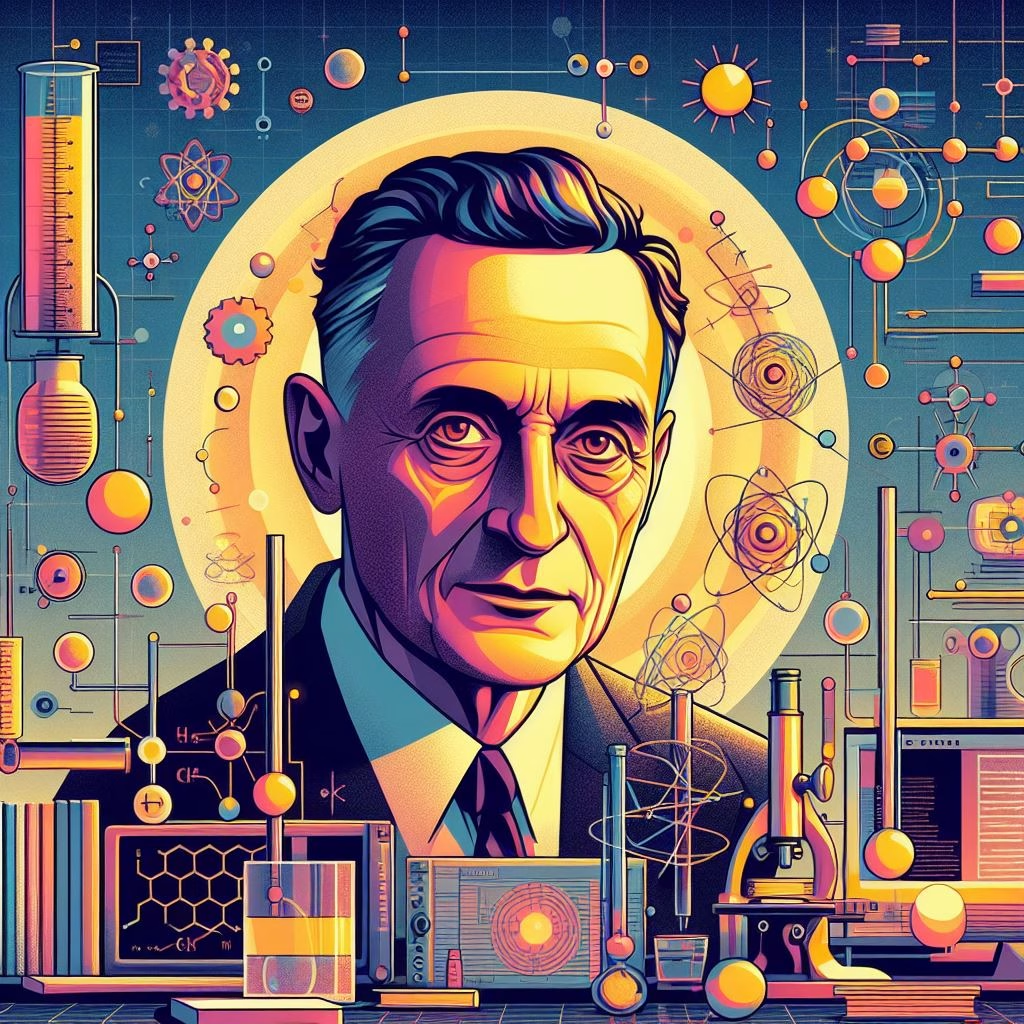J. Robert Oppenheimer is credited with unlocking the immense power within atoms by overseeing the historic launch of the high-stakes Manhattan Project. During World War II, the United States was engaged in a race to develop the world’s first nuclear weapons in anticipation of Germany’s own nuclear capabilities. Oppenheimer was directing the design of the first atomic bombs tested in history-altering desert detonations.
Oppenheimer didn’t just work on weapons research. He also laid the groundwork for nuclear physics applications ranging from reactors to medical tracers. He regularly interacted with Einstein and Niels Bohr while pioneering new research directions. Unfortunately, he was exiled from politics due to a security scandal. This article revisits several lesser-known aspects of Oppenheimer’s illustrious career.
Impressing Einstein with Unifying Breakthroughs
In the 1920s, Robert Oppenheimer was a physicist with big ambition. He wanted to make his mark with some Nobel Prize-worthy discoveries. He was particularly interested in problems that other leading theorists were trying to solve. These problems were about combining quantum mechanics, which describes subatomic activities, with classical physics, which governs larger-scale phenomena.
Oppenheimer saw huge potential in creating a unified framework that combined the microscopic, probabilistic quantum world with deterministic general relativity models at astronomical scales. This could resolve discrepancies between theories and bring us closer to Einstein’s long-sought goal of a single master theory explaining all observable physics in a uniform way.
Oppenheimer and his colleague Max Born collaborated on several ingenious papers examining interactions between electrons and electromagnetic fields using quantum analysis related to atom absorption/emission of radiation. Their calculations yielded a new quantum description of electromagnetic effects that closely integrates concepts at the micro and macro levels.
Despite being highly technical, these analyses drew praise from none other than legendary physicist Albert Einstein, who praised the equitable treatment of particles and waves as indicators of progress towards unified theories. Soon after, Einstein invited Oppenheimer to Princeton’s Institute for Advanced Study for extended theoretical discussions.
During their lively discussions, Einstein was impressed by Oppenheimer’s versatile mastery of complex physics, which enabled him to bridge understanding across scales. In particular, Oppenheimer’s groundbreaking calculations were notable for neatly incorporating the granular quantum behaviour of particles alongside astronomical-scale gravitational curvatures within a single framework. The two had long and engaging discussions on topics ranging from cosmological hypotheses to quantum electrodynamics.
However, they had different ideas about how to apply their theories. Oppenheimer wanted to use them in practical ways, while Einstein wanted to keep them pure. They talked about lots of different topics, from neutron stars to how the universe is expanding. This inspired the young physicist and helped him decide what to do next.
Pioneering School Transforms US Physics
When Oppenheimer returned from European apprenticeships to take up a Caltech faculty position in the late 1920s, he was shocked by the gaps in American physics mastery he witnessed abroad. To raise standards, Oppie boldly established a new graduate physics programme at the University of California, Berkeley, in 1935, which included seminars and collaborative problem solving.

The Berkeley camp quickly drew exceptional talent to solve problems ranging from cosmic rays to quantum electrodynamics. His novel school produced legions of young theorists who guided the impending nuclear age while pioneering key experimental techniques. The success of the “Oppenheimer School” confirmed the virtues of collaboratively tackling mysteries ranging from fundamental building blocks to the vast cosmos, which reflected its founder’s diverse curiosities. Oppenheimer transformed American physics prowess for decades by emphasising conceptual unity and creativity fostered by community.
Spearheading the Manhattan Project
Despite his liberal academic leanings, Oppenheimer was compelled to pursue military research by 1942 due to the mushroom cloud’s rise over humanity. His rare cross-disciplinary brilliance and administrative experience perfectly matched the enormous technical challenges that the unprecedented atomic bomb initiative presented.
Oppenheimer demonstrated formidable leadership under time constraints by coordinating world-class expertise ranging from explosives to metallurgy and physics to rapidly realise the untested uranium and plutonium weapon concepts. He also had to deal with military oversight, security constraints, construction demands, and dramatic tests, all of which culminated in history with the searing dawn of the nuclear era, which he profoundly influenced.
For better or worse, his patriotic passion generated terrifying new forces in the world that quickly swayed global politics. The immediacy of nuclear threats weighed on Oppenheimer in the aftermath, but he continued to advise on nuclear policy while resuming physics research.
Dark Clouds of Suspicion Haunt a Visionary
Oppenheimer was involved in several nuclear projects prior to the damage to his reputation that was caused by his involvement in politics. This damage was unfairly sustained long after his death. Despite the frequent verification of his innocence, his security clearance was revoked in 1952 due to the false spying allegations made by right-wing opponents who opposed his advocacy of nuclear restraint.
The humiliating hearings showed condemning but limited details of his radical leftist ties, such as CPUSA membership, with fabricated FBI phone tap evidence in order to portray Oppenheimer as a security threat. Much later analysis confirms that he never truly spied for the Soviets as a government consultant prior to WWII, despite lying about acquaintances on pledges of allegiance.

The prevailing view among independent historians is that the primary motivations were likely to be opposition to Oppenheimer’s advocacy against the rapid expansion of nuclear arsenals, rather than actual treason. However, the combination of Oppenheimer’s hostile tactics and his inability to reveal classified information had an irreversible impact on his political influence. The manufactured scandal, based on half-truths, unfairly capped his career peak. Even after the renowned physicist’s death, the fallout continued.
Inspiring Subsequent Generations
J. Robert Oppenheimer, cast out of his postwar circles, demonstrated unusual resilience in reengaging phenomena that had captivated him since childhood, such as geology, literature, and Hinduism, while speaking out against dangers posed by sciences divorced from ethics or justice. Despite the fact that the security vendetta restricted later research directions, he continued to mentor prominent physicists and publish insightful reflections.
While offering criticism of nuclear stockpiles, Oppenheimer provided inspiration to numerous international researchers, encouraging them to pursue conscientious science. Oppenheimer’s visions were credited by colleagues such as theoretical physicist Freeman Dyson with stimulating his sensibilities by disclosing the perils of politically intertwined technologies. By cautioning against the dehumanising effects of science, the complex figure emphasised responsibilities that extend beyond the advancement of technical knowledge, towards the betterment of humanity. Oppenheimer illuminated the perils threatening the very fabric of creation, which continue to preoccupy scientists worldwide, through profound self-reflections planted amidst crises.








